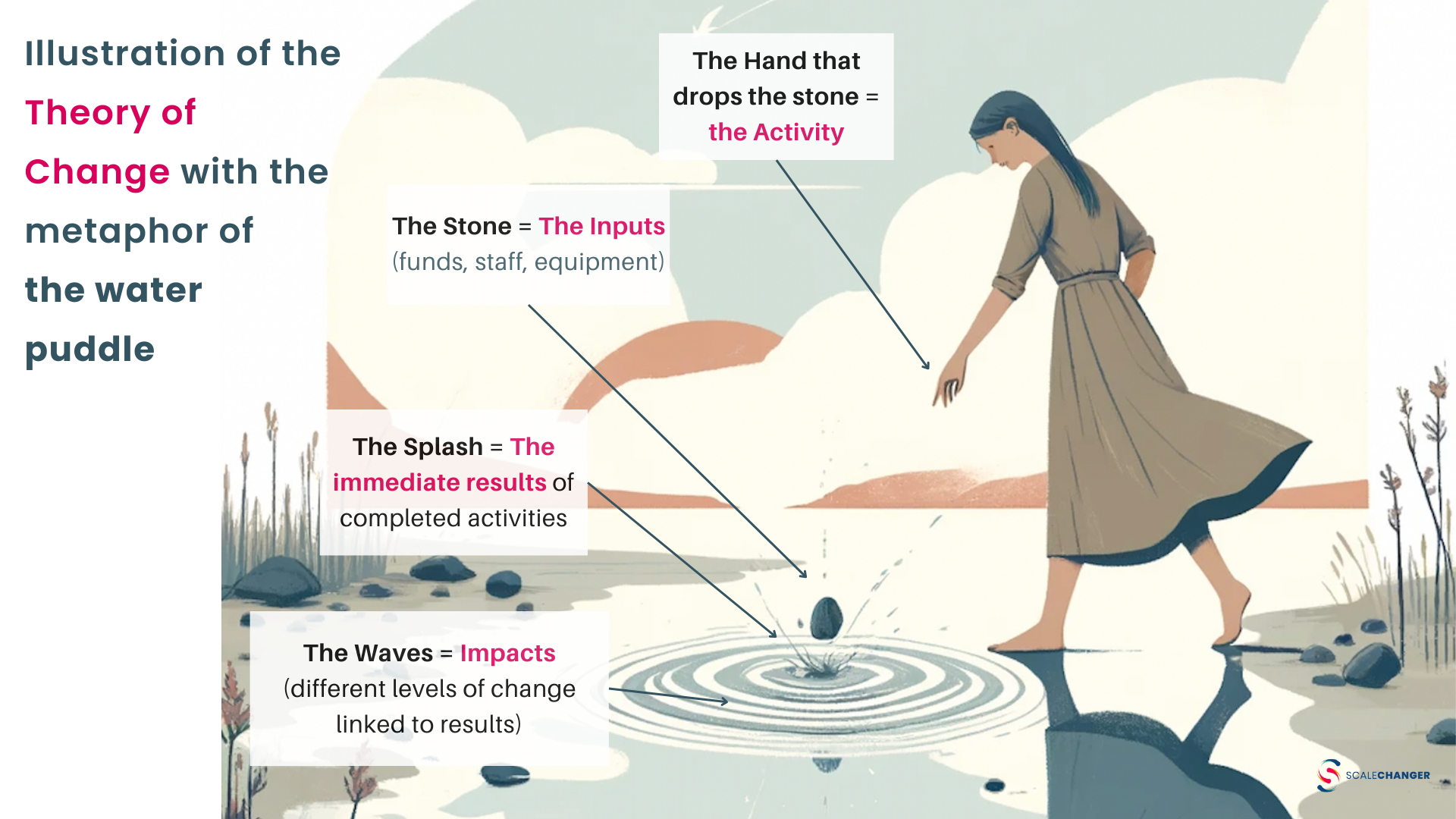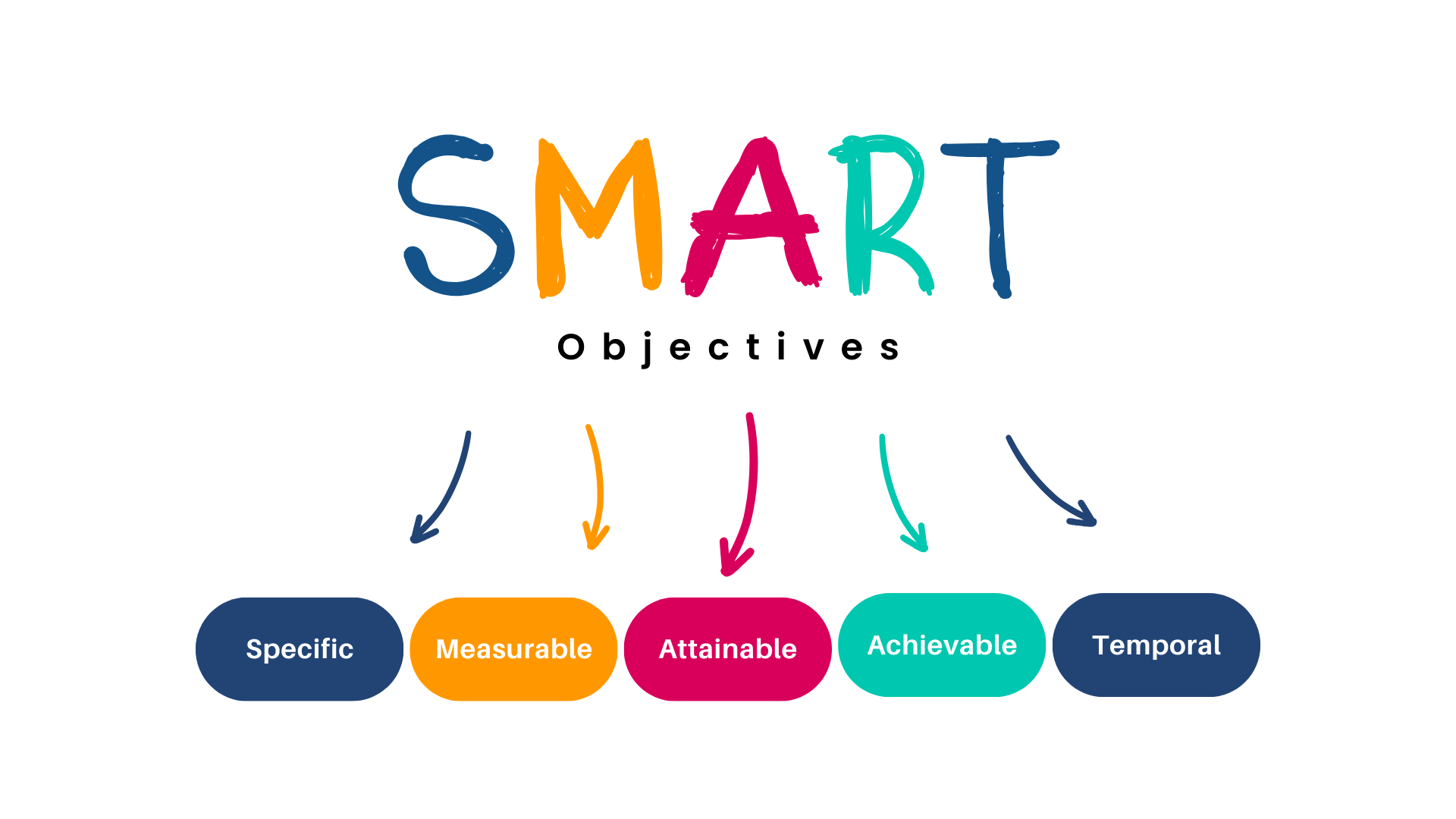Understanding and implementing the Theory of Change: A guide for organisations

This article aims to demystify the theory of change. It also seeks to make it a powerful tool for all organisations that want to create a positive impact in their community.
What is the theory of change?
The theory of change describes how and why a series of actions will bring about change in a given context. It helps to define the activities, the expected results and the anticipated effects and impacts. It is essential to make explicit the relationships between the cause and effects, as well as the success indicators. This enables organisations to choose the most relevant levers of action in their context.
To visualise the theory of change, imagine a stone thrown into a puddle of water.
The stone represents the project inputs.
The throw represents the activities.
The splashes represent the results.
The ripples represent the effects.
This metaphor illustrates the logic behind a theory of change. Specific actions lead to results, which in turn produce long-term effects and impacts.
Explaining your theory of change is crucial when facing complex challenges. It highlights the causal links between actions and outcomes. This makes it possible to test hypotheses: if we do this… then this will happen… which in turn will cause that…
By expressing these links, organisations can identify the most relevant levers for action. They can define what they want to change, how, and why they believe these changes will occur.
A clear theory of change is also a great tool to set success indicators. It helps define results, effects, and impacts, and to measure progress over time.
How do you build your theory of change?
Building a theory of change starts with the definition of a vision of the desired change. The next step is to identify the problems and obstacles that stand in the way of this vision. Then, decide on the actions needed to overcome them.
As a first step, organisations can list all the causes of the problem, even those beyond their direct control. It is important to use data from previous projects or external studies to validate the cause-and-effect links. One activity can have completely different effects in two different contexts.
For example, offering scholarships to poor families may increase boys’ enrolment in school. But this might not improve girls’ enrolment if other factors are not addressed, such as safety on the way to school or limited job opportunities for women. Scholarships may also have no impact if schools cannot accept more pupils due to a lack of buildings or teachers.
Objectives should be specified in a SMART way and prioritised.
It is also crucial to involve stakeholders at every stage.
Here is an example – Case study
Vision : All children in the region have access to quality education. They complete at least primary school, fulfil their potential, and contribute actively to society.
Problems identified : Lack of access to educational resources, inadequate school infrastructure and family poverty limiting access to education.
Interventions and SMART objectives : Increase the school enrolment rate for girls and boys in the region by 20% over the next two years through school support programmes, the improvement of educational infrastructure and the allocation of grants to disadvantaged families.
In short, the theory of change is an essential tool for organisations seeking to create a lasting impact in their community. By defining a clear vision, identifying obstacles and planning strategic interventions, these organisations can achieve significant and positive change in their environment.
Other ressource on this topic 👉 https://www.scalechanger.org/en/ressources/maximising-impact-using-the-theory-of-change-to-guide-your-actions/


